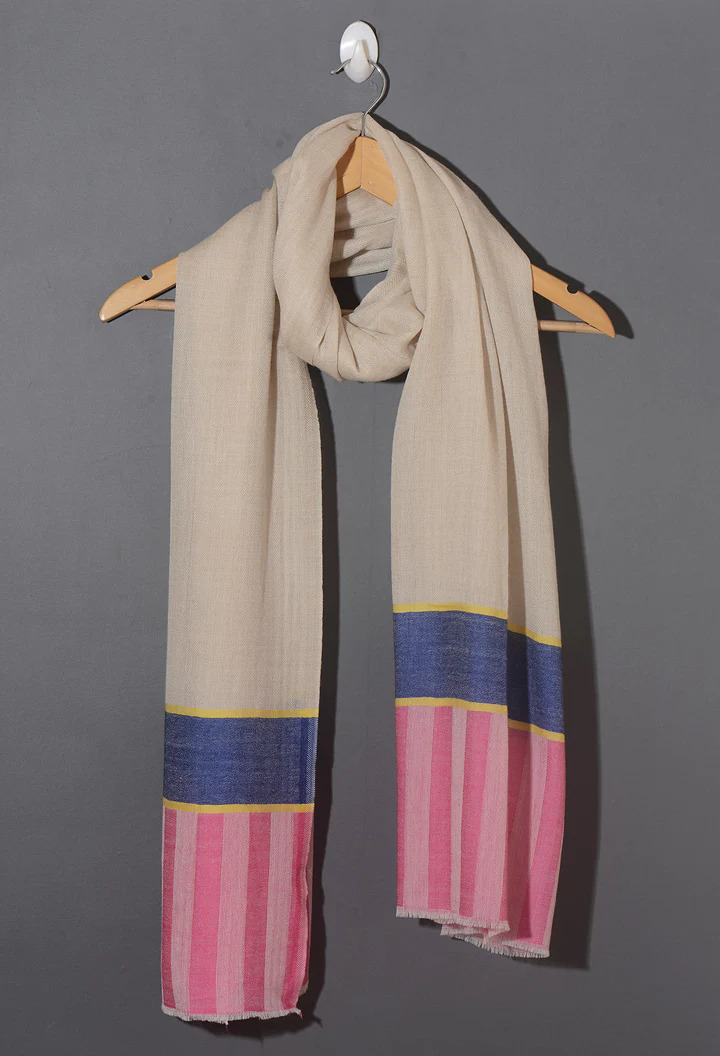A good Kashmiri pashmina shawl is something you don’t just buy—it’s something you keep, sometimes even pass on to the next generation. But today, with so many lookalikes in the market, it’s hard to know whether what you're picking is genuine or not.
If you’ve ever thought, “How do I even know if this is real pashmina?”, you’re not alone. Many Indian buyers feel the same. So here are some simple, no-nonsense tips to help you tell the difference—nothing complicated, just what you need to know.
1. Feel the fabric – is it soft, or slippery?
Original pashmina feels soft, warm, and a little fuzzy. Not shiny, not silky, not slippery.
If it feels like smooth silk or looks very glossy, it might be mixed with synthetic fibres. A real pashmina shawl will have a dry, cosy touch.
Try this: Rub it gently on your face or neck. It should feel soft but not slippery. That warm, comforting touch? That’s usually a good sign.
2. Check the weave – tiny imperfections are a clue
Genuine pashmina is handwoven in Kashmir. That means the weave might not be factory-perfect. You may notice slight irregularities in the threads if you look closely—and that’s a good thing.
If everything looks machine-made and “too perfect”, it’s worth asking twice.
3. The famous ‘Ring Test’
Many people in India know this old-school trick. Try passing a plain pashmina shawl through a small ring—like a finger ring. A real pashmina (especially plain ones without embroidery) will glide through easily, because it’s so fine and light.
This test works better on thinner shawls without heavy work on them.
4. Ask for a GI Tag or authenticity proof
These days, many original Kashmiri pashmina shawls come with a GI (Geographical Indication) tag—a government-approved certificate that proves it was made the traditional Kashmiri way.
Just ask the seller if they have a tag or certificate. It’s not about being formal—it’s just to be sure you’re paying for something authentic.
5. Look at the embroidery – is it too perfect?
If the shawl has embroidery (like kani or sozni), check how neat it is. Hand embroidery usually has tiny variations—every stitch won’t be the same. That’s what makes it beautiful.
If the embroidery looks like a machine did it—exact, repetitive, and flat—it might not be the real thing.
6. Check the edges – are the tassels natural?
On many real pashminas, the ends have soft, twisted tassels that are made from the same threads as the shawl itself.
Machine-made ones might have fake, stitched-on fringes. Run your fingers through them—you’ll know if they’re not right.
7. Be careful with price – too cheap? Think again
Let’s be honest: pure pashmina isn’t cheap. If someone is offering you a full-sized “pashmina” for ₹2,000 or less, it’s likely not the real thing.
A basic, good-quality pashmina will usually cost ₹7,000 and above in India. And if there’s embroidery or handwork, it’ll cost more.
8. Buy from places you trust
Whether you’re buying from a local shop, a craft exhibition, or online—go with someone who seems to know their stuff. Read reviews, ask questions, and trust your gut.
Many buyers in India prefer government emporiums, known artisan stores, or family-run boutiques with a long history.
In short..
A real Kashmiri shawl is light, soft, handwoven, and not something you’ll find at a bargain price. It's not just a shawl—it's a piece of tradition. So if you’re buying one, take your time and make sure it's worth keeping for years to come.
#KashmiriPashminaShawl #PashminaShawlTips #AuthenticPashmina #IndianHandlooms #PashminaLove #KashmiriCraft #BuyHandmadeIndia #PashminaCare





Comments